A galaxy is a vast assemblage of stars, stardust, gases, cosmic rays, and enigmatic dark matter.
Galaxies are scattered throughout the vast expanse of the universe.
Our very own galaxy is known as the Milky Way. We affectionately refer to it as our galaxy because that’s where our home planet Earth resides.
Furthermore, galaxies themselves are comprised of intricate systems. The Milky Way Galaxy serves as the abode for our very own Solar System.
The Solar System encompasses eight celestial bodies known as planets (Earth being one of them) that orbit around the radiant Sun. Additionally, it includes satellites and an array of smaller celestial entities such as comets, cosmic debris, and meteoroids.
The Universe is home to countless billions of galaxies. However, with our naked eye, we can only perceive four of them: The Milky Way, the Andromeda Nebula, the Large Magellanic Cloud, and the Small Magellanic Cloud.

The Milky Way is commonly referred to as the Galaxy. In order to differentiate it from other galaxies in the Universe, we capitalize the term Galaxy.
Classification of galaxies
The universe was extensively studied by Edwin Hubble, an American astronomer. It was Hubble who proposed the classification of galaxies based on their shape.
- elliptical,
- spiral (regular and barred),
- irregular,
- lenticular.


The Milky Way: A Closer Look
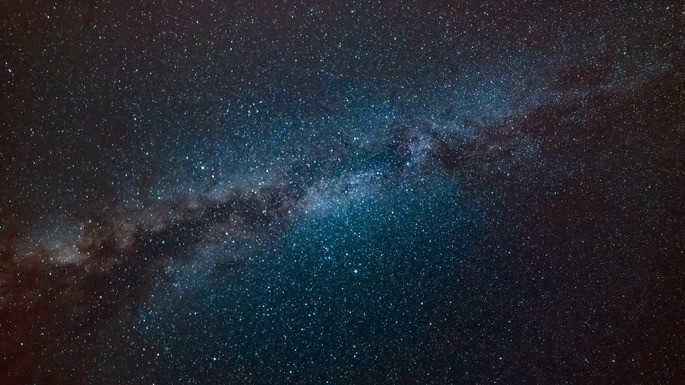
A spiral galaxy is what we call the Milky Way.
Within this galaxy, you can find not only the Sun but also our home planet Earth along with various other planets. They all orbit the Sun and together make up our solar system.
Aside from the solar system, the galaxy is also home to over 200 million stars, as well as interstellar dust and gas.
Galaxy Size and Structure
The Milky Way is often described as having a disk-like structure.
Comprising a spherical shape known as the halo, the galaxy is composed of dark matter, stars, and gas. In the center lies a black hole. It spans a vast distance of 100,000 light years in diameter.
Ways to observe the Milky Way
The naked eye is sufficient to observe the Milky Way, especially during cloudless nights.
Individuals residing in the southern hemisphere have a distinct advantage. The Galaxy is visible from various locations, including Brazil, Paraguay, northern Argentina, South Africa, Namibia, southern Madagascar, and central and southern Australia.
Expand your knowledge by studying each Constellation within our Galaxy.
Who was the first to discover the Milky Way?
The Milky Way has been observed and utilized for navigation since ancient times by the Greeks and Romans.
The Italian astronomer Galileo Galilei was the first scientist to present evidence of the structure of our galaxy. In 1610, using a telescope, he demonstrated that the Milky Way is composed of numerous stars.
It was not until the early 20th century that Edwin Hubble discovered that the Milky Way is a complete galaxy.
What is the origin of its name?
As the story goes, there was a mortal woman named Alcmene who gave birth to a son fathered by Zeus, and they named him Hercules.
Hera, who was Zeus’ wife and a goddess, became envious and harbored ill feelings towards the child.
With the assistance of the cunning goddess Athena (or, according to an alternate version of the tale, Hermes), Hera was tricked into nursing Hercules with her own milk.
However, upon realizing the true nature of the child, Hera rejected him, causing her milk to spill and create the celestial phenomenon known as the Milky Way.
What sets a galaxy apart from the universe?
The universe is comprised of numerous galaxies.
There are four galaxies that are visible to the naked eye: the Milky Way, the Andromeda Nebula, the Large Magellanic Cloud, and the Small Magellanic Cloud.
However, scientists estimate that there are around 100 million galaxies in total. Since we are unable to observe the entire universe, there could be even more.
Additionally, the count of galaxies was not done manually. This figure is an approximation.
Scientists determined the number of galaxies in a specific part of the universe and then extrapolated it to estimate the total number of galaxies in the entire universe.
When gazing up at the night sky, individuals are treated to the captivating radiance of countless stars, many of which belong to our very own galaxy, the Milky Way. However, there exists an infinite number of star systems and star clusters that are millions of light years away from Earth and lie beyond the boundaries of our galaxy. The exploration of these distant systems enables us to gain a deeper understanding of the origins and vastness of the Universe.
Galaxies are expansive conglomerates comprising stars, interstellar gas, star clusters, dust, and dark matter, all of which are held together by the force of gravity. Every component within these entities, which are the largest structures in existence, exhibits movement in relation to a central point. It is estimated that there are a minimum of 3 trillion such clusters, all situated at significant distances from our planet.
The closest galaxies visible to the naked eye include Andromeda, the Large and Small Magellanic Clouds, and M33.
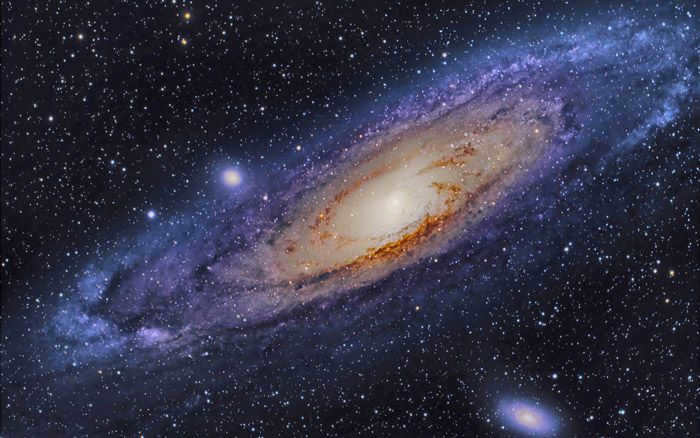
Origin and composition of galaxies
The term “galaxy” originates from the ancient Greek word for “milky ring.” Scientists propose that galaxies formed within 150 million years following the occurrence of the Big Bang. The precise age of galactic systems is challenging to determine due to their formation process taking anywhere from 1 to 2 billion years.
Star systems are distributed unevenly throughout the Universe, with some regions containing clusters of them, while other regions have rare formations.
Determining the exact size of galaxies is complicated as they lack distinct boundaries. The stars within them become less luminous the further they are from the center. Consequently, the peripheral zones may not always be within the field of view of telescopes.
There can be anywhere from 1 to 10 clusters in systems of galaxies. Take the Milky Way, for instance, which is home to our Solar System and is a member of the Local Group. It’s quite uncommon to find single galaxies; more frequently, they are found in pairs, trios, or even larger formations.
Within these systems, the objects vary in terms of mass, origin, and chemical composition.
Different Kinds of Galaxies and Their Distinctive Features
The wide range of celestial systems has led scientists to consider organizing them based on their appearance, as well as the patterns of internal processes. In 1925, Edwin Hubble put forth a classification of clusters based on their morphology and provided definitions for each category. This classification system is still in use today, remaining unchanged. Additionally, more detailed categorizations have been developed.
Elliptical galaxies (e)
Take on the form of an ellipse. Comprise of large, red, and frigid celestial bodies. As indicated by astronomers, elliptical stellar systems make up 20% of the total volume. There exist both diminutive and colossal clusters.
Galaxies possess a substantial amount of dust and gas, although astronomers hypothesize that elliptical-shaped systems represent the final stage in the progression of galactic systems. Supermassive black holes situated at the core of the most ancient formations attract and absorb gas and dust, thereby decelerating their evolution.
The constellation Sculptor is home to the nearest elliptical-type galaxy to Earth, which was first identified by American astronomer Harlow Sheple in 1938. This galaxy is classified as a dwarf spheroidal system and stands out due to its unusually high concentration of metallic objects, accounting for approximately 4% of its total mass. Such a characteristic is typically observed in celestial formations situated at the outermost reaches of the observable Universe.
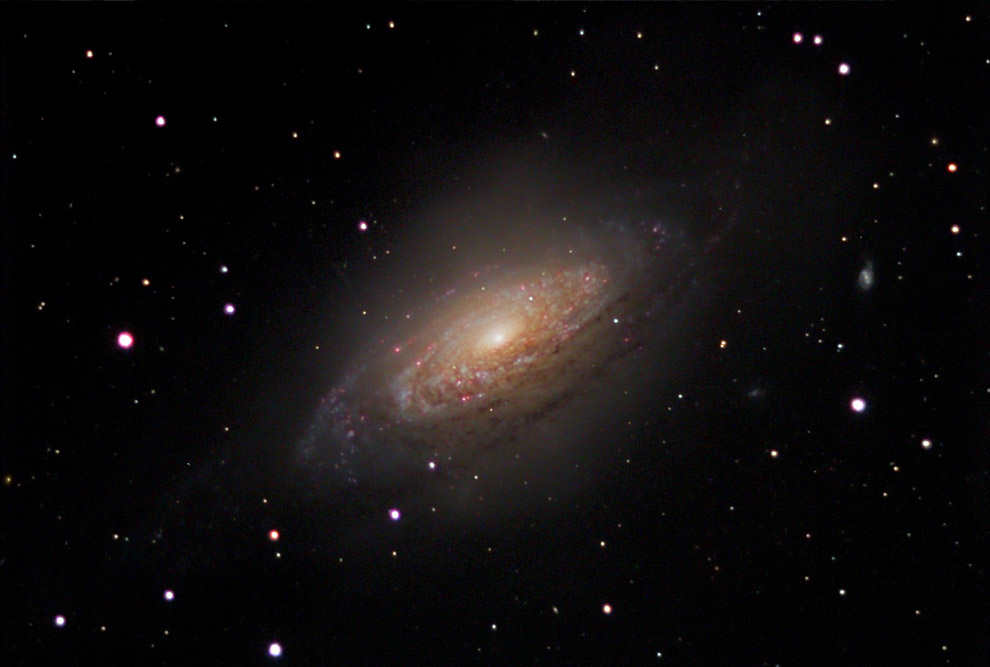

Spiral galaxies (s)
They are a type of stellar pancake that rotates around its axis and has up to 500 billion objects. In the central zone, there is an oval bulge called the bar. Spiral formations have two disks and are considered the most beautiful and captivating sight in space due to their numerous twisted spiral arms.
An example of a spiral galaxy system is the Andromeda Nebula. It was mentioned in the writings of the German astronomer Simon Mayr in the 17th century. The first photograph of a tilted star disk at an angle of 15° was taken in 1899 by Isaac Roberts. In 2006, a large flare was recorded, possibly from a supernova explosion.
In the year 1912, it was discovered by scientists that the Andromeda Nebula is making its way towards the Sun at a remarkable velocity of 300 kilometers per hour. Experts forecast that in approximately 3 billion years, the Andromeda Nebula will merge with our very own Milky Way. As a result of this cosmic interaction, the solar system will be propelled into the vastness of outer space, although the planets themselves will remain unharmed.
Irregular galaxies (Irr).
Irregular galaxies (Irr) do not conform to the structure established by Hubble, as they cannot be categorized as either elliptical or spiral formations. These galaxies lack a distinct nucleus and exhibit chaotic motion among their stars. It is believed that irregular systems may have had well-defined boundaries in the past, but gravitational forces have caused them to become deformed.
There are three subtypes of irregular galaxies:
- Irr I – These are systems with a discernible structure, but not enough to be classified under one of the types identified by Hubble.
- Irr II – These systems have either undergone collisions in the past or are currently experiencing gravitational interactions.
- Dwarf Irregulars – These galaxies are characterized by their minimal luminosity.
There are two notable systems known as the Large and Small Magellanic Clouds (BMO and MMO) that serve as examples of the latter. These systems are situated in the part of the sky that falls within the Southern Hemisphere, making them unobservable from Russia. The diameter of these clouds is 30 times smaller than that of the Milky Way, and they are 300 times lighter. Additionally, they are located at a distance of 163 thousand light years from the galaxy that houses Earth.

The initial sightings of these celestial formations occurred in the early 1st millennium A.D. Subsequently, Amerigo Vespucci recorded his observations of them in 1503, while Fernan Magellan encountered them in 1519 during his voyage around the world. They were given their name in honor of the latter explorer.
The advent of the Hubble telescope has enabled modern investigation into these formations. In 2006, it was discovered that the BMO has a rotation period of 250 million years.
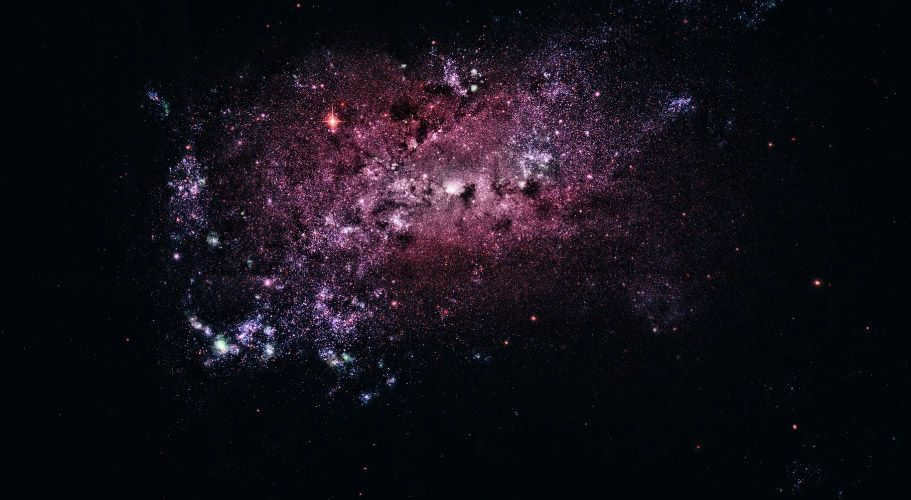

Featuring Polar Rings
Galaxies with polar rings are a rarity. They have a unique shape, resembling a large oval with a smaller oval positioned perpendicularly inside, where the outer ring rotates directly above the poles.
Therefore, it is hypothesized that these galaxies were formed as a result of the merging of two systems. However, the study of such systems is challenging due to the limited number of objects available for investigation and their significant distance from us.
An example of a galaxy featuring polar rings is the lenticular system Centaurus A, identified as NGC 5128 in the cosmic catalog. This galaxy is known for its intense emission and is considered one of the most active radio galaxies.
The solar system is 12 million years away from it. James Dunlop, an English scientist, discovered the formation in 1826, and John Herschel provided a detailed description of Centauri A in 1847. The discovery of large quasars and neutron stars was made possible with the assistance of the Hubble Space Telescope and the Einstein Observatory orbiter.
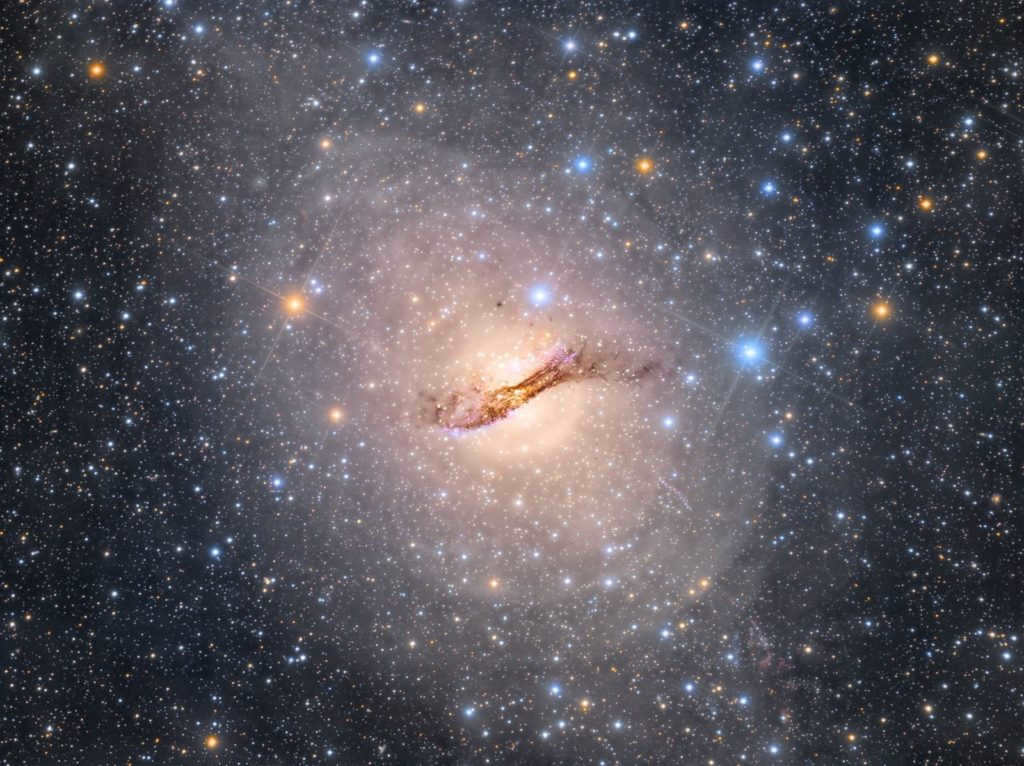
Unique galaxies
These galaxies have a unique structure resulting from a collision with another galaxy or the impact of cosmic matter ejections. Due to their distinct characteristics, they cannot be categorized according to the Hubble classification.
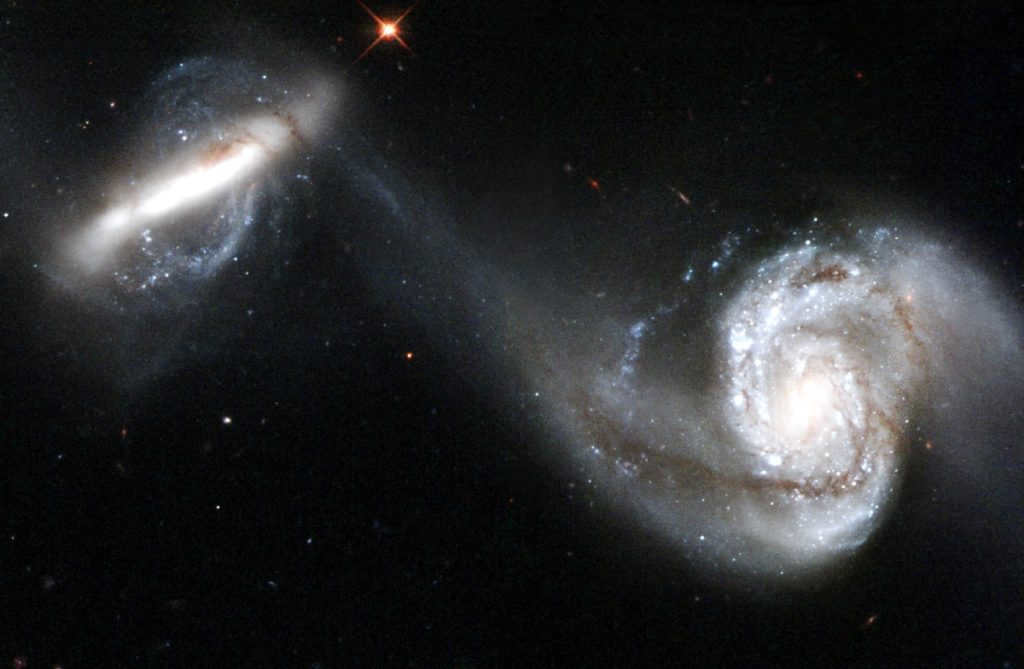
What is the Sun, the Moon, and Other Celestial Bodies?
For thousands of years, humanity has been actively exploring and studying the Sun, Moon, asteroids, comets, and other objects in space.
During the Middle Ages, renowned scientists such as Galileo Galilei, William Herschel, and Charles Messier observed and documented numerous nebulae in the sky, but their true nature and structure remained unknown.
It was only in the early 1920s that the study of galaxies and the understanding of their various forms became possible, thanks to the first long exposure photographs of the night sky. It was then proven that the luminosity originated from beyond the Milky Way.
The initial compilations of the observable portion of the Universe were created by Edwin Hubble. He devised a system for categorizing stellar systems based on their shape and the nature of their origin.
Subsequently, research on galaxies continued in various countries around the world, such as the Soviet Union with B. A. Vorontsov-Vel’yaminov and the United States with F. Zwicky and others. Fascinating discoveries about galaxies were made in 1990 following the launch of the Hubble Space Observatory, sparking the beginnings of extragalactic astronomy. As time went on, detailed atlases and catalogs featuring cluster coordinates came into existence.
Contemporary observatories have the ability to detect entities that are situated millions of light years away from our planet. The most common approach to determine distances is through the utilization of the photometric technique, which relies on an object with known luminosity properties as a reference point for observations.
Fascinating Trivia
Some intriguing facts about galaxies:
- The number of objects within clusters always varies. On average, each cluster contains several million stars.
- There is a hypothesis that posits the presence of a black hole at the core of every galaxy, which is believed to serve as the nucleus and the primary source of gravitational attraction.
- At present, the Milky Way is absorbing a dwarf galaxy known as Dwarf Sagittarius.
- About 90% of the mass of galaxies is composed of dark matter.
- The diameter of galaxies is measured in kiloparsecs. For instance, the size of the Milky Way is 30 kiloparsecs, and the largest known galaxy spans over 600 kiloparsecs.
- Galaxies are moving apart from one another at such a rapid pace that they will become unobservable from Earth within a few billion years.
- When two systems interact, the likelihood of internal objects colliding is minimal due to the significant distance between them.
- The Milky Way belongs to a group of smaller formations and is considered a satellite of a larger, giant galaxy.
- Systems are constantly growing in size and mass. Expansion occurs through the attraction of gases and dust particles from space or through collisions and mergers with other systems.
The luminosity of galaxies is measured in Lc and is determined by the number of stars within them. There are smaller objects with a luminosity of a few million Ls and larger systems with a luminosity of billions of suns.
All the information relating to galaxies for children of all ages can be found here: an in-depth description complete with photos, an explanation of what a galaxy is, the different types of galaxies, including our own Milky Way, and how galaxies form and merge in space.
An introduction for children, parents, or teachers could begin by explaining that galaxies are vast cosmic systems that contain a combination of dust, gas, and stars. It’s important for children to understand that an exact number of galaxies cannot be calculated, as there could be as many as 100 billion galaxies in the observable universe alone. Some galaxies may share similarities with our Milky Way, while others may have completely different structures.
It’s also important to clarify to children that small galaxies are those that have fewer than a billion stars. In our own galaxy, the Sun is just one of the 100 billion stars that exist.
Did you know that galaxies are classified into three different types: spiral, elliptical, and irregular? This is especially fascinating for young learners!
Understanding the Different Types of Galaxies
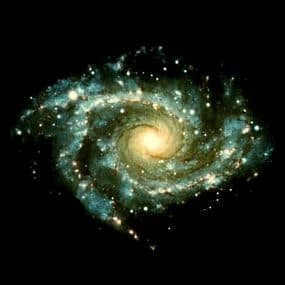
Spiral galaxies
Spiral galaxies, such as the Milky Way, are characterized by a flat disk with a bulging center and spiral arms. Within the disk, planets, stars, dust, and gas orbit around the central point.
Despite our inability to perceive it, the rotational speed of spiral galaxies can reach hundreds of kilometers per second. This rapid rotation causes the matter within the disk to take on a spiral shape, resembling a cosmic whirligig. Some spiral galaxies have even more pronounced curvature, giving them the appearance of the Sombrero Galaxy.
The bulging center of spiral galaxies contains older stars, while new stars continue to form within the spiral arms. Surrounding the disk is a halo that scientists find particularly intriguing, as it may contain a significant amount of enigmatic dark matter.
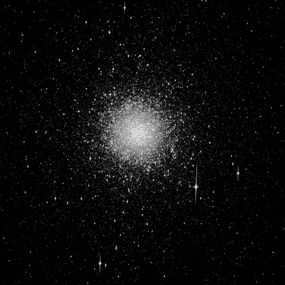
Elliptical galaxies
Parents or teachers at school can elucidate to very young children that ellipticals are named after their shape. They are typically elongated, circular galaxies. At times, they can even resemble a cigar.
They contain a large number of old stars (up to a trillion), but not much dust and other interstellar matter. The stars revolve around the center, like in spiral galaxies, but in this case, they are still different. It is worth explaining to the children that their directions are more chaotic and even random. Very few new stars are formed in this type.
The Universe is home to a variety of galaxies, with giant elliptical galaxies being particularly well-known. These massive structures can extend up to an impressive 2 million light-years in length. However, amidst these behemoths, there are also smaller counterparts known as dwarf elliptical galaxies.
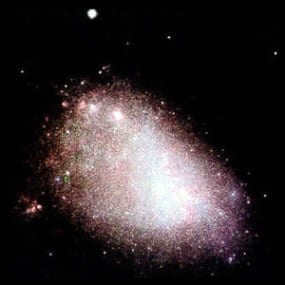
Irregular galaxies
Irregular galaxies are those that are not classified under these categories. They have an irregular shape and do not have a consistent, defined form. This is due to the gravitational pull from other galaxies, which affects them in most cases.
Understanding Galactic Mergers for Kids
Out in space, there are galaxies that exist on their own or come together in pairs. However, more often than not, they come together in larger groups known as clusters or super clusters. When this happens, they interact with each other due to gravity and may even merge. During this process, gases start to accumulate at the center of the merged galaxies, leading to the rapid formation of new stars.
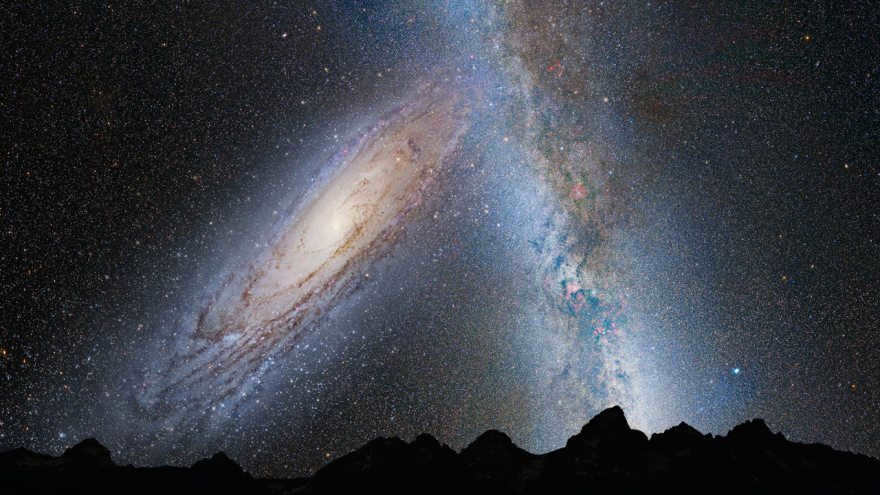

In approximately 3.75 billion years, the sight above us will be reminiscent of the picture shown here, with the Andromeda galaxy making its way towards the Milky Way.
It is important for young individuals to understand that even our own Milky Way could potentially go through a merger in the future. A likely contender for this event would be the Andromeda galaxy, positioned two million light-years away. It can be observed with the naked eye from the northern hemisphere.
There is no need to be alarmed by this prospect, as it is a natural part of intergalactic evolution. Throughout this process, irregular galaxies can transform into a different shape, while spiral galaxies take on an elliptical form.
The origin of galaxies – an explanation for kids
The majority of scientists in the space community believe that galaxies were formed shortly after the Big Bang, which occurred about 10-20 billion years ago. Just milliseconds after this event, gases started to merge, collapse, and contract under the influence of gravity. These processes served as the foundation for the creation of galaxies.
However, when it comes to the formation of galaxies, researchers have different opinions. Some theorize that small globular clusters, each containing a million stars, formed first and then came together to form galaxies. On the other hand, there are those who believe that galaxies appeared first, and it was within these galaxies that stars began to gather and form clusters.
We trust that this description and portrayal has expanded your understanding of galaxies. Naturally, powerful telescopes situated in the world’s finest observatories are required to observe them. However, our photos, drawings, and diagrams allow you to appreciate the various kinds of galaxies. Additionally, parents can expose their children to the awe-inspiring Milky Way – a luminous band of stars spanning the nighttime sky.
Galaxies are vast celestial systems composed of dust, gas, and myriad stars. The precise count is incalculable, as there are 100 billion of them solely within the observable universe.
While some galaxies bear a striking resemblance to the Milky Way, others exhibit marked dissimilarities.
A galaxy is deemed “small” if it possesses fewer than a billion stars. In the Milky Way, the Sun represents just one among a billion stars.

The processes of galaxy formation and evolution have not been completely comprehended by scientists, as these early stages took place in the distant past. The age of the oldest galaxies is nearly as old as the universe itself, estimated to be around 10-13 billion years. To gain a deeper understanding of galaxy classification and age, I recommend watching the informative and fascinating video on the subject.
Milky Way Galaxy
Our place of residence is within a galaxy of the spiral variety, characterized by a vast expanse stretching across 100,000 light-years. The central core, forming a disk-like structure, extends outwards to a distance of 30,000 light-years, encompassing a multitude of aged stars and harboring a massive black hole. Among the four spiral arms that adorn our galaxy, our solar system finds itself situated within the Orion arm, approximately 30,000 light-years away from the galactic center.
As our solar system journeys through space, it orbits around the galactic center of the Milky Way at an impressive velocity of 250 km/s, completing a full revolution in approximately 220 million years.
Altogether, there are three primary categories of galaxies: spiral, elliptical, and irregular. Some examples of spiral galaxies are the Milky Way and Andromeda. At the core of these galaxies are objects and a black hole, which are surrounded by a halo of stars and dark matter. Sleeves extend from the central region. The spiral shape is a result of the ongoing rotation of the galaxy. While some spiral galaxies have only one arm, others may have three or more.
Table illustrating the characteristics of the main types of galaxies
| Spheroidal component | Whole galaxy | Yes | Very faint |
| Stellar disk | None or weak | Main component | |
| Gas-dust disk | No | Yes | |
| Spiral branches | No or only near the core | Yes | No |
| Active nuclei | Occur | No | |
| Percentage of total number of galaxies | 20% | 55% | 5% |
Spiral galaxies can be classified into two types based on the presence or absence of a central junction. The first type has a dense bar of stars intersecting the center, while the latter type does not exhibit such a formation.
Elliptical galaxies are the abode of ancient stars and lack sufficient amounts of dust and gas to give rise to youthful ones. They may take on the form of a circle, oval, or spiral, but without any arms.
Around a quarter of galaxies belong to the category of irregular galaxies. They are smaller compared to spiral galaxies and can exhibit peculiar shapes at times. These shapes can be explained by the emergence of new stars or by gravitational interactions with neighboring galaxies. The Magellanic Clouds are among the irregular galaxies.
There are also numerous subtypes of galaxies, including Seyfertian galaxies (which are fast-moving spirals), bright elliptical supergiants (which absorb other galaxies), ring galaxies (which lack a nucleus), and others.
Categories of galaxies
Spiral galaxies
A spiral galaxy, such as the Milky Way, is characterized by a flat disk, a convex center, and spiral arms. Within the disk, there are stars, planets, dust, and gas that orbit around the central region. The rotational velocity can reach up to 100 km/s, resulting in the formation of a spiral shape in the matter on the disk. Some spiral galaxies exhibit unique patterns, which give them distinctive names, like the Sombrero Galaxy.
As one moves closer to the central bulge, older stars become more concentrated, while new stars continue to form in the spiral structure. These disks are also surrounded by mysterious halos of dark matter.
To delve deeper into the topic of spiral galaxies, check out our informative article.
Spiral galaxies in the Messier catalog
Galaxies with Jumpers
Spiral galaxies that exhibit large, luminous bands of stars and material dividing their central regions are referred to as galaxies with jumpers. Most of these galaxies feature bars, which astronomers find intriguing as they have yet to fully comprehend their role within galaxies. Bars may contain supermassive black holes and are categorized into subgroups based on the characteristics of their bulges, spiral arms, and density.
We also have a dedicated article specifically exploring spiral galaxies with jumpers.
Spiral galaxies featuring a connection according to the Messier catalog
Galaxies of an elliptical shape
An elliptical galaxy is characterized by its shape, resembling an ellipse. While generally round, it is slightly elongated along one axis, often resembling the form of a cigar. This particular type of galaxy is home to numerous ancient stars (1 trillion), yet lacks in dust and other interstellar matter. The stars are concentrated around a central point, but their movement occurs in random directions, resulting in the formation of few new celestial objects.
The most well-known examples of this type are the giant elliptical galaxies, which can span up to 2 million light-years. However, there are also smaller variations known as dwarf elliptical galaxies.
To delve deeper into the subject of elliptical galaxies, refer to our comprehensive article.
Elliptical galaxies in the Messier catalog
Irregular galaxies
An irregular galaxy is a type of galaxy that does not fit into the first two categories. These galaxies can appear distorted or lack a specific shape due to their interaction with other objects.
Learn more about irregular galaxies in our article.
The well-known irregular galaxies include:
The irregular galaxies listed in the Messier catalog
A collection of less familiar galaxies:
- Volopassus 1
- Eyes of Virgo
- Dwarf galaxy in the Pump
- Siamese Twins
- Darth Vader Galaxy
- Condor Galaxy
- NGC 772
- NGC 1277
- NGC 1365
- NGC 1569
- NGC 1679
Clusters of Galaxies
Galaxies have the ability to exist independently or in pairs. However, in the majority of cases, they are part of larger collectives known as groups, clusters, and superclusters. These entities interact and combine to form singular galaxies. This process causes the flow of gases towards the center of the galactic structure, resulting in the activation of star formation.
Scientists hypothesize that the Milky Way will eventually merge with the Andromeda galaxy, situated 2 million light years away and visible from the northern hemisphere of Earth. These events represent various stages of evolution, as irregular galaxies transform into one of the recognized shapes and spiral galaxies evolve into elliptical forms.
Origin of galaxies
Scientists hypothesize that galaxies emerged in the immediate aftermath of the Big Bang, which occurred approximately 10-20 billion years ago, resulting in the creation of the universe. In the first milliseconds following the cataclysmic event, gas clouds began to coalesce, collapse, and contract under the influence of gravity, gradually forming the fundamental building blocks of galaxies.
However, while there is a consensus regarding the general timeline and process, there is ongoing debate regarding the specifics of how and where this cosmic evolution began. Some theories propose that the initial stage involved the merging of clusters comprised of millions of stars, while others argue that galaxies themselves existed from the very outset, with stars subsequently merging to form clusters. To gain a deeper understanding of the intricate process of galactic merger and the absorption of galactic structures, watch the video below.
Active Galaxies
An active galaxy is a unique type of galaxy that emits an extraordinary amount of energy compared to a typical galaxy. While the Milky Way is known for its stability, active galaxies surpass it by emitting a staggering 100 times more energy. This increased energy output is primarily attributed to explosive events occurring within the galactic nucleus, resulting in the release of energy in the form of powerful radio waves. Active galaxies exhibit a range of distinct varieties, making them a fascinating subject of study in the field of astronomy.
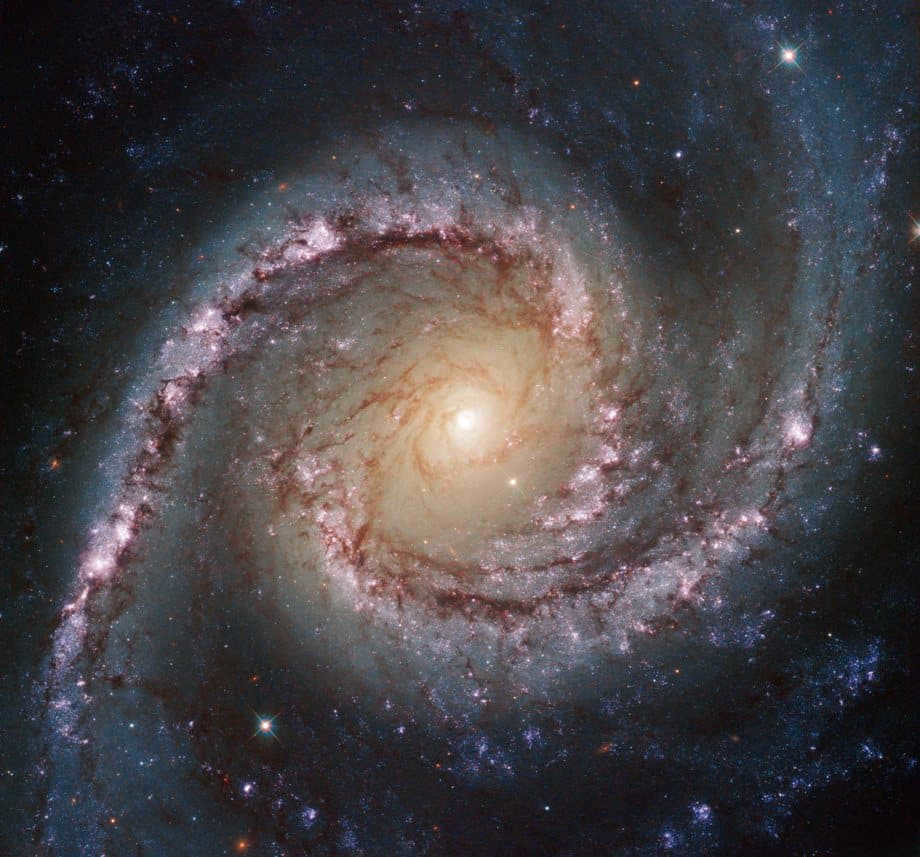
NGC 1566 is an example of a Seyfert galaxy, which is a type of spiral galaxy with a highly active nucleus.
Seyfert galaxies are similar in appearance to spiral galaxies, but they have a nucleus that is incredibly active. Quasars are particularly intriguing because they can emit as much energy in just one second as the Sun does throughout its entire lifetime. Quasars look like stars and are known to be the most energetic objects in the universe. Many scientists believe that quasars are actually the active nuclei of distant galaxies in the early stages of their evolution. The light from these quasars has been traveling to us for billions of years and may even originate from the very beginning of the universe.
So, what was the process of discovering our galaxy like? The ancient civilizations noticed a luminous trail in the sky and named it the Milky Way. Then, in the late 1500s, Galileo Galilei observed the stars through a telescope and realized that this trail was actually composed of numerous individual objects. Later, in 1755, Immanuel Kant proposed that our galaxy was a lenticular star band and that there were many more similar formations in the vastness of the Universe.
As time went on, scientists delved deeper into understanding our galaxy, but they still believed that the Sun was at its center. However, everything changed in 1918 when Harlow Shapley discovered that we were actually located on the outskirts of the galaxy.
Hubble, galaxies and the expanding Universe
Edwin Hubble deserves significant recognition for his groundbreaking discovery in 1924, which established that our galaxy is just one of numerous galaxies in existence. Through the use of his impressive 100-inch telescope, Hubble made the remarkable observation that a collection of stars, previously believed to be part of the Milky Way, were in fact the Andromeda galaxy situated a staggering 2.2 million light-years away. Building upon Hubble’s work, Jan Oort further demonstrated in 1927 that galaxies undergo rotations around their central points.

The Hubble telescope also made a significant discovery regarding the movement of distant galaxies. It found that these galaxies are actually moving away from us at incredibly high speeds. This observation led to the formulation of Hubble’s law, which states that the universe is expanding.
In 1996, the Hubble telescope captured images of 1,500 distant galaxies during their formation process. This discovery greatly increased the estimated number of galaxies in the universe. Prior to this, it was believed that there were only around 50 billion galaxies. However, with the new data, it is clear that the actual number is much higher. On our website, you can explore a wide variety of galaxies and view high-quality photos, diagrams, and drawings of these cosmic structures.
- What exactly is a galaxy?
- How many galaxies are there in the universe?
- Which is the largest galaxy?
- What is the closest galaxy to us?
- Which is the youngest galaxy?
- What is the most distant object ever captured?
- How many galaxies have astronomers discovered so far?
- What is the estimated number of planets in a typical galaxy?
- What is the distance between our galaxy, the Milky Way, and the Andromeda galaxy?
- Which galaxy is projected to collide with the Milky Way in the future?
- What is the official name of our galaxy?
- Which galaxy is home to planet Earth?
- What is the origin of the name “Milky Way” for our galaxy?
- How are galaxies named and categorized?
- Can you provide some examples of named galaxies?
Exploring superclusters and galaxy clusters.
- How do galaxies evolve and change over time?
- What causes galaxies to rotate?
- How do large galaxies form and develop?
- What can be found at the center of a galaxy?
- What is an active galactic nucleus and how does it affect a galaxy?
- What is the galactic plane and why is it significant?
- Is there a galactic equator similar to Earth’s equator?
- What is the concept of galactic alignment?
- What is intergalactic space and what can be found there?
- Can you explain what blazars are and how they relate to galaxies?
- What distinguishes spiral galaxies from other types of galaxies?
- Are there any spiral galaxies with unique features or characteristics?
- Irregular galaxies;
- Elliptical galaxies;
- Dwarf galaxies;
- Dark matter galaxy;
- Shapes of galaxies;
- Magellanic clouds;
- The Large Magellanic Cloud;
- Small Magellanic Cloud;
- Other galaxies;
Edwin Hubble proposed the sequence of evolution of stellar systems. The most common type is the spiral galaxy, and our galaxy, the Milky Way, is a part of this type. So, what are the other types of galaxies?
According to this classification, there are four main types of galaxies. Sometimes, dwarf galaxies are considered a separate type, but they do not have any distinguishing features except for their relatively small size and they belong to one type or another in the classical categorization.
Overview of Elliptical Galaxies
With their luminous core and fading edges, elliptical galaxies resemble gigantic stars when observed from afar. Composed primarily of ancient stars, these spheroidal galaxies possess a distinctive yellow or reddish tint. Due to the scarcity of interstellar gas and dust within them, the formation of new stars is a rare occurrence, although there are occasional exceptions. The classification of elliptical star systems hinges on their size and level of compression, ranging from E0 to E7. These galaxies constitute approximately one-quarter of all observable galaxies. According to Hubble’s classification, they represent the nascent stage of galactic evolution.
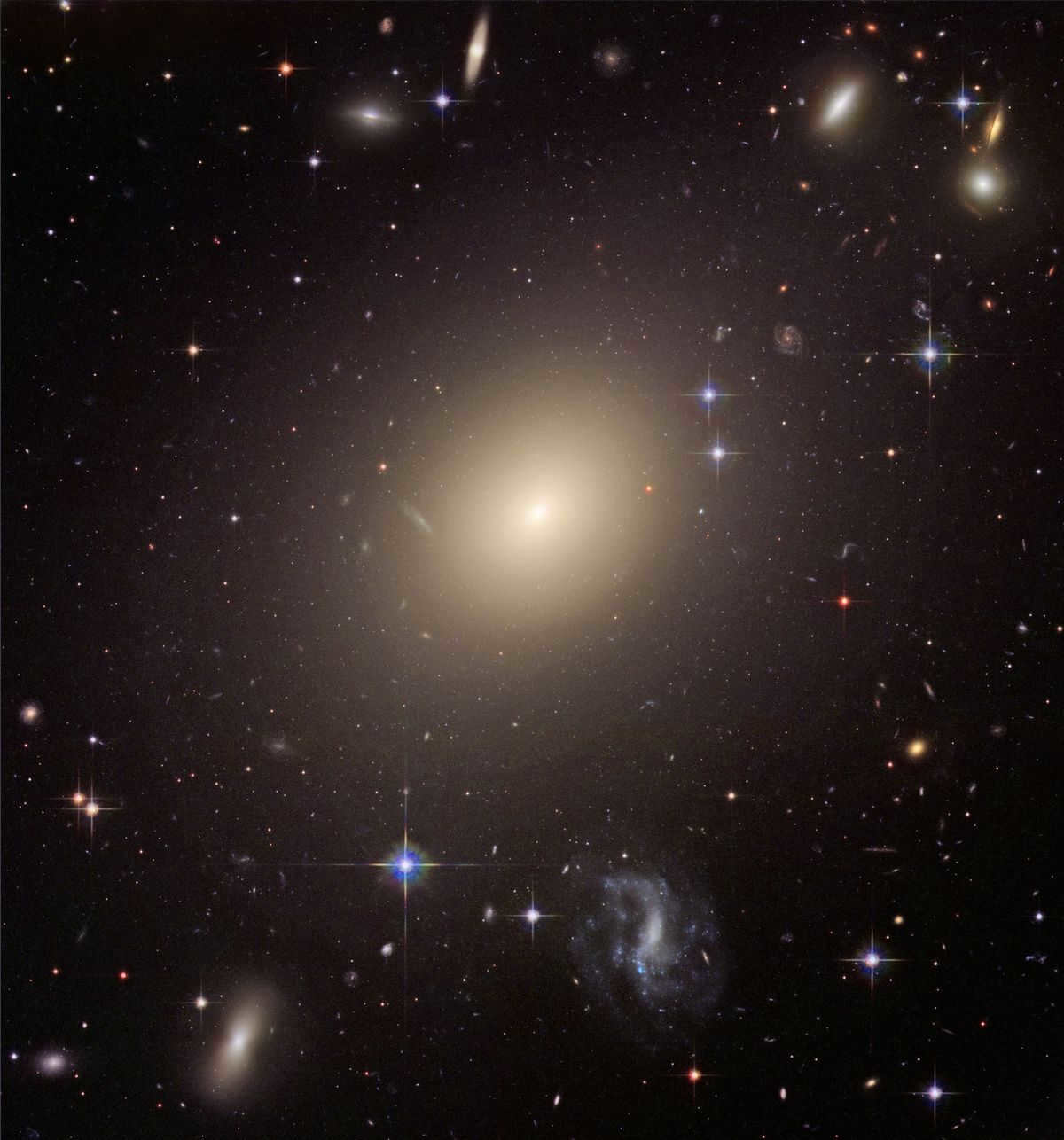

What is a Spiral Galaxy?
A spiral galaxy is the most common and perhaps the most stunning type of galaxy, comprising over half of all known galaxies. It appears as a disk with a brilliant yellow sphere at its center, surrounded by fainter spiral arms of a bluish hue (caused by the presence of unique stars – white and blue supergiants).
Spiral galaxies differ from elliptical star systems in several structural features. Firstly, they possess arms where active star formation processes occur. Secondly, they have a stellar disk, which is a relatively thin layer of matter that lies along the galaxy’s plane. This is where the majority of objects within the system are located, and the stars within this disk orbit around its center. Thirdly, the presence of interstellar gas and dust, which are crucial for the formation of stars, is widely observed in spiral galaxies. Many spiral galaxies also have a central bar-like structure, from which the arms diverge. They are classified using the letter S and vary in terms of sleeve density (Sa-Sd, with a bar – SBa-SBd).
The average number of sleeves is a pair, but there can be more; in certain cases, the sleeves can vary in size. All of them (unless they experience a galactic collision) are coiled in one direction around the center, where the primary mass of matter is concentrated in the form of a supermassive black hole and a dense spherical cluster of old stars, known as the bulge.
Both our galaxy, the Milky Way, and the Andromeda Nebula, which we will inevitably collide with in 4 billion years, are spiral galaxies. The Sun is situated between the arms and away from the galactic center, with a speed roughly equivalent to the rotation speed of the arms. As a result, the solar system avoids regions of active star formation that pose a danger to Earth’s life, where supernovae frequently occur.
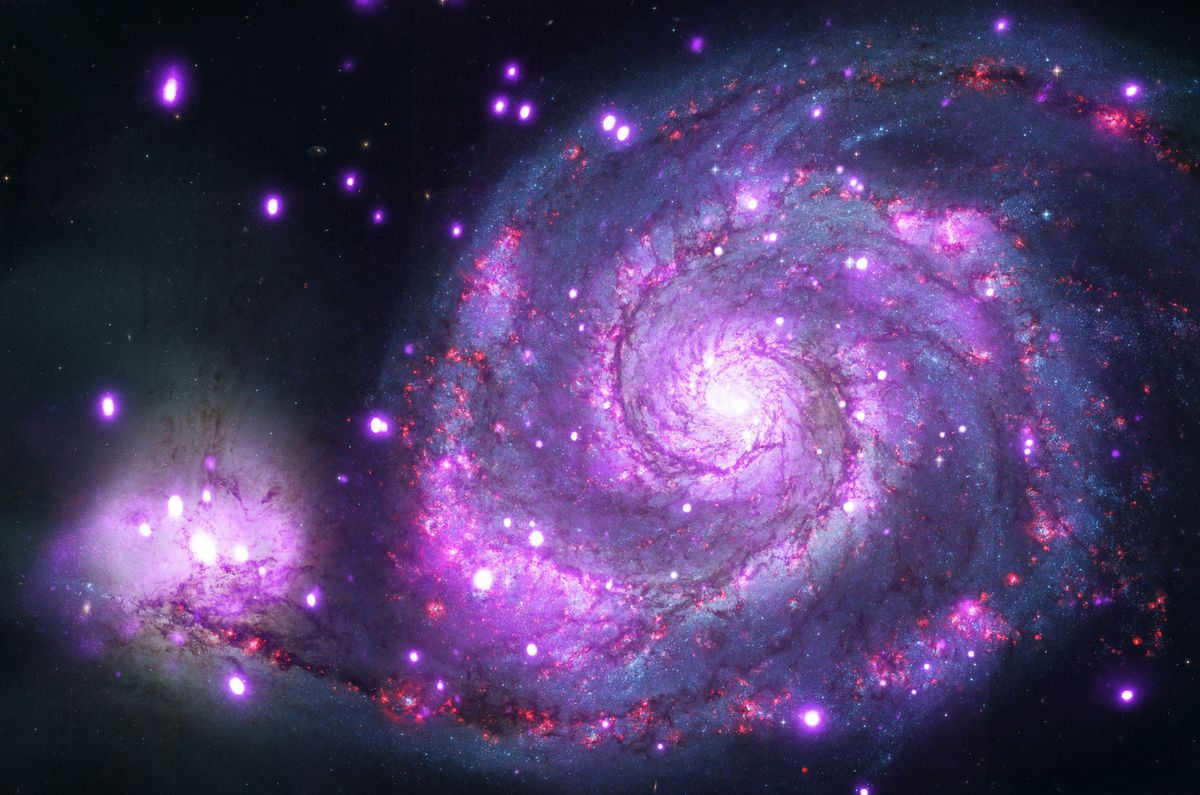

What is a Lenticular Galaxy?
A lenticular galaxy is a type of galaxy that falls between an elliptical galaxy and a spiral galaxy (S0) in Hubble’s classification system. Lenticular galaxies have a central globular cluster-bulge surrounded by a stellar disk, but their arms are smaller and less pronounced compared to spiral galaxies. Additionally, lenticular galaxies have a limited amount of interstellar gas and dust, which hinders the active formation of new stars. These galaxies are primarily populated by old, large stars that are typically red or yellow in color.
Lenticular galaxies are distinguished by their level of interstellar dust and the density of the central region. They make up approximately 20% of all known galaxies.
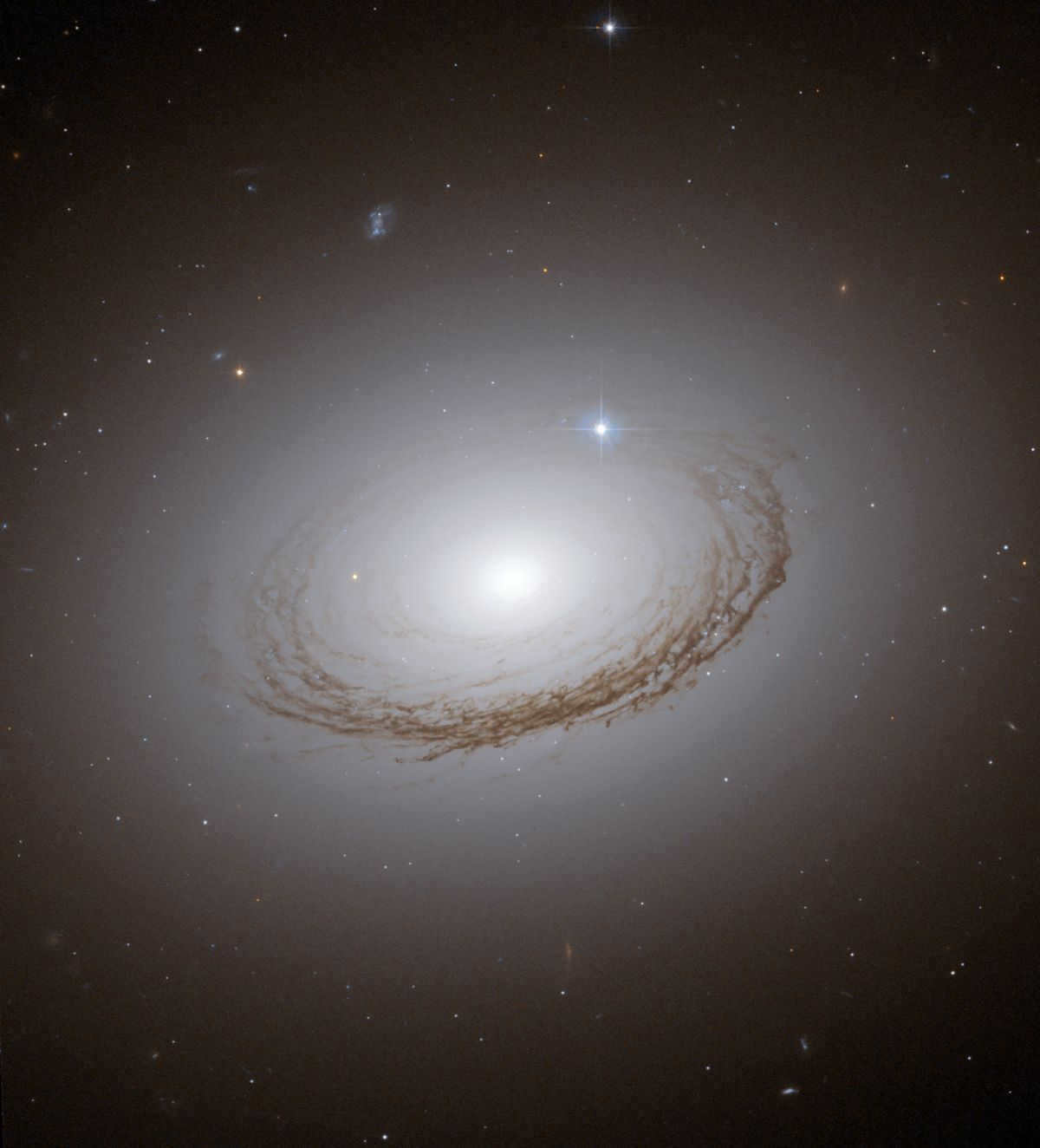

Unconventional galaxy
Unconventional galaxies do not conform to the typical shapes of ellipses or spirals. Instead, they are collections of stars bound together by gravity in a chaotic manner, often lacking a defined shape or central point. These galaxies make up approximately 5% of all galaxies.
What sets them apart from other galaxies? It is believed that each of these stellar systems was once an elliptical or spiral galaxy, but was distorted due to a collision with another galaxy or close proximity to one.
Unconventional galaxies can be classified into two main types: those that still retain some semblance of structure and can be categorized within the Hubble sequence (Unconventional I), and those that lack any discernible structure (Unconventional II).





